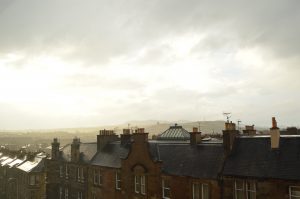“When I think of acquiring for myself one of our luxurious dwellings, I am deterred, for, so to speak, the country is not yet adapted to humanculture, and we are still forced to cut our spiritualbread far thinner than our forefathers did their wheaten. Not that all architectural ornament is to be neglected even in the rudest periods; but let our houses first be lined with beauty, where they come in contact with our lives, like the tenement of the shellfish, and not overlaid with it…[describes natural materials]…With a little more wit we might use these materials so as to become richer than the richest now are, and make our civilization a blessing. The civilized man is a more experienced and wiser savage. But to make haste to my own experiment.” 142
This passage peaked my interest and also caused slight frustration the first time I read it. It is a snippet from Economy, nearing the end of Thoreau’s discussion of western style houses/shelters. In this section, he argues against the building style of his neighbors saying that it is too ornamental and that the expenses associated with the style are too great. As an alternative, he turns to the buildings of Native American peoples (he is very general about who he is addressing) and seems to praise them for their use of natural building materials and the structure’s functionality. This distinction he makes between the two styles makes it clear that he values frugality, functionality, and authenticity when it comes to architecture (or really anything).
The way that he talks about this subject also highlights his positionality as a white, male, middle class, American. Throughout the discussion he refers a lot to ideas of progress, especially where it concerns notions of modernity, as though some people have “progressed” and others have stayed stagnant. He of course praises this more “simple life” (actually just romanticizing and generalizing a whole diverse and dynamic ethnic group and their culture) and then to make matters more complicated, he states, “the civilized man is a more experienced and wiser savage.” Hence he seems be trying to understand and appreciate a culture that is not his own, but is unable to fully comprehend his own ethnocentrism and the impact it has on this analysis. In total, this whole section says a lot about the times that he was living in, his worldviews, the values that he upheld in his life, and his ideals for a better society.


